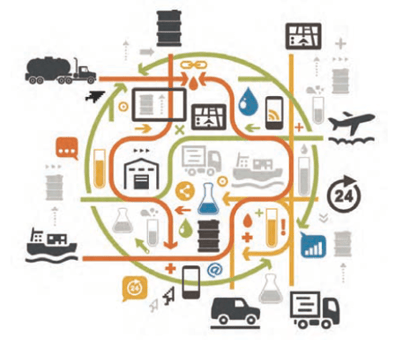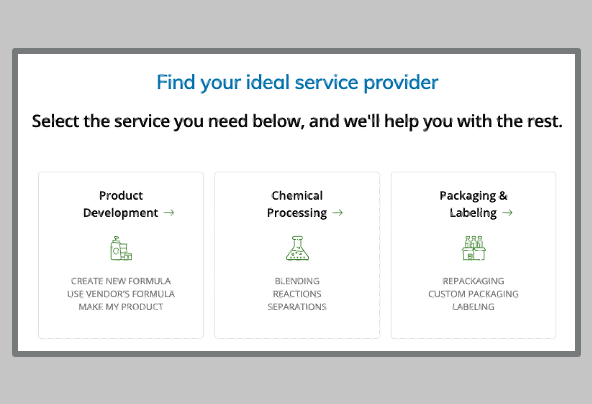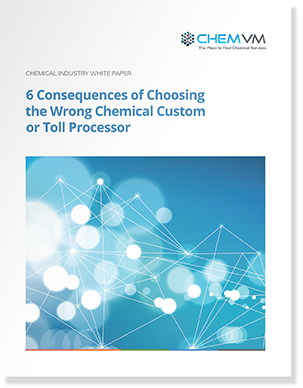Creating a B2I Experience for the Chemical Industry (Part 1)
 Erik Viens
Erik Viens
In my nearly four decades in the chemical industry, I’ve been lucky to see so many changes for the greater good. Mostly driven by technology (with smart regulations), we’ve created a safer, cleaner and more efficient and effective market. These changes have allowed innovation from the molecular level to the research and manufacturing processes and the safe and efficient delivery of chemistry to where it is needed worldwide.
Amazingly though, one crucial commercial change that has not kept up is the way we interact and how we collaborate across different industry players. For the most part, finding the right partner in the supply chain relies on outdated communication methods that take time, have high opportunity costs, and in many cases have low success rates. While other industries including retail, lodging, home services and even supermarkets have redefined customer interaction and expectations, the chemical industry for the most part operates commercially in a very similar manner as when I was a brand-new engineer at the beginning of the 1980’s.
The Move from B2B to B2I
It’s time we change the way we organize and leverage knowledge across the industry and serve each customer very specifically with precisely what they need and when they need it. There have been attempts at doing this going back to the late ‘90’s and there are currently a few firms innovating in product procurement and sourcing (CheMondis, Knowde and Molbase). But how can buyers with specific chemistry services needs find those firms that have the exact capabilities they need? Likewise, chemical suppliers are consistently forced to take on projects poorly suited to their expertise or equipment because they need to fill capacity.
Let’s think about this: the chemical industry’s reason for being is to safely develop, produce and deliver chemistry that improves the quality of life. This comes in the form of affordable energy, clean drinking water, reliable food sources and a wide range of products that improve our health, homes and environments. To deliver these goods to the market, a myriad of players across seemingly infinite geographies, chemical capabilities, and touch points have to find each other and critically collaborate. It’s amazing we can even operate as well as we currently do! In day-to-day practice, our current system of buyer/supplier collaboration has enormous inefficiencies, as this graphic depicting our current industry demonstrates:

- Tens of thousands of producers
- Hundreds of thousands of products
- Millions of customers
- Producers are also chemical customers
- Critical to every industry and geography
- Order size from "test tubes to barges"
- Packages range from envelopes to bulk tonnage
- Some chemicals are basic commodity
- Some molecules and mixes are very specific
- Critical chemistry knowledge always needed
To stay competitive in a flattening world with margins becoming thinner by the quarter, the chemical market must move from a business-to-business (B2B) mindset to a business-to-individual (B2I) approach. To do this, we need to specifically understand both sides of the partner equation – data on each individual customer’s needs as well as equally critical data for each unique supplier’s capabilities. We must know:
- The customer’s goals & requirements for a specific chemical project need
- Where the engineering expertise and knowledge is for that need
- The chemical products and applications best fitting the customer need
- The supply partners best equipped to design, create and commercially fill that need
- The real-time matching of the needs with the capabilities and all the commercial details needs to fulfill the customer requirements again and again.
As the author of this Forbes article on B2I states, “Today, when it is possible to connect any thing or person with any other thing or person at or near zero cost, it…becomes possible to meet the needs of each individual in an intimate frictionless way and do it on a massive scale.”
By moving from a predominantly B2B approach to an efficient, data-driven B2I chemical market, the IDEAL chemical & service supplier creates superior value for their customer with reduced costs for all.
In part 2 of this blog series, I'll describe how digital technology is driving the chemical market's shift toward a B21 experience. In the meantime, check out our new white paper on the downfalls, and best practices, of choosing your next chemical service provider.
Download our White Paper:
6 Consequences of Choosing the Wrong Chemical Custom or Toll Processor


